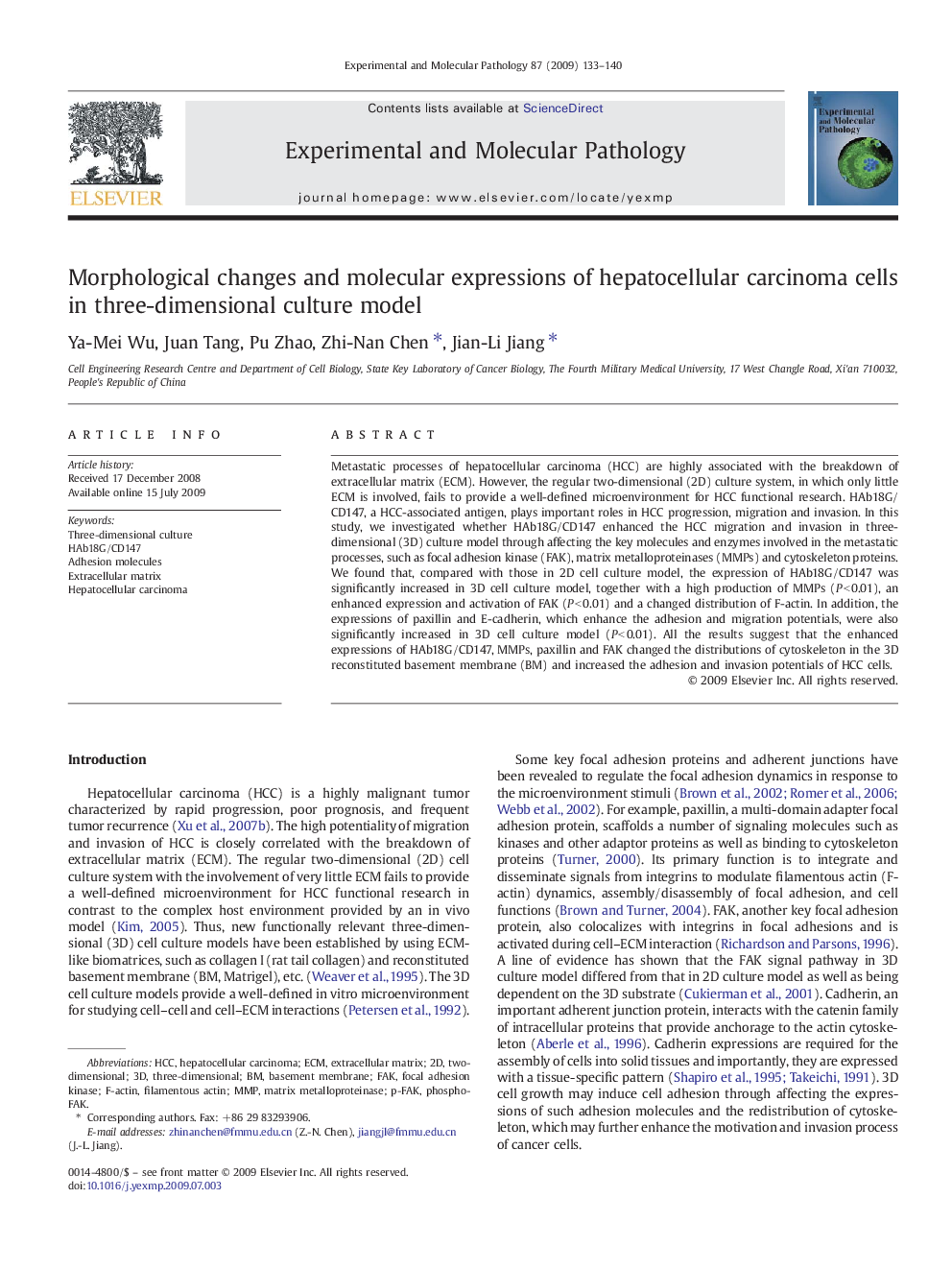| Article ID | Journal | Published Year | Pages | File Type |
|---|---|---|---|---|
| 2775674 | Experimental and Molecular Pathology | 2009 | 8 Pages |
Metastatic processes of hepatocellular carcinoma (HCC) are highly associated with the breakdown of extracellular matrix (ECM). However, the regular two-dimensional (2D) culture system, in which only little ECM is involved, fails to provide a well-defined microenvironment for HCC functional research. HAb18G/CD147, a HCC-associated antigen, plays important roles in HCC progression, migration and invasion. In this study, we investigated whether HAb18G/CD147 enhanced the HCC migration and invasion in three-dimensional (3D) culture model through affecting the key molecules and enzymes involved in the metastatic processes, such as focal adhesion kinase (FAK), matrix metalloproteinases (MMPs) and cytoskeleton proteins. We found that, compared with those in 2D cell culture model, the expression of HAb18G/CD147 was significantly increased in 3D cell culture model, together with a high production of MMPs (P < 0.01), an enhanced expression and activation of FAK (P < 0.01) and a changed distribution of F-actin. In addition, the expressions of paxillin and E-cadherin, which enhance the adhesion and migration potentials, were also significantly increased in 3D cell culture model (P < 0.01). All the results suggest that the enhanced expressions of HAb18G/CD147, MMPs, paxillin and FAK changed the distributions of cytoskeleton in the 3D reconstituted basement membrane (BM) and increased the adhesion and invasion potentials of HCC cells.
